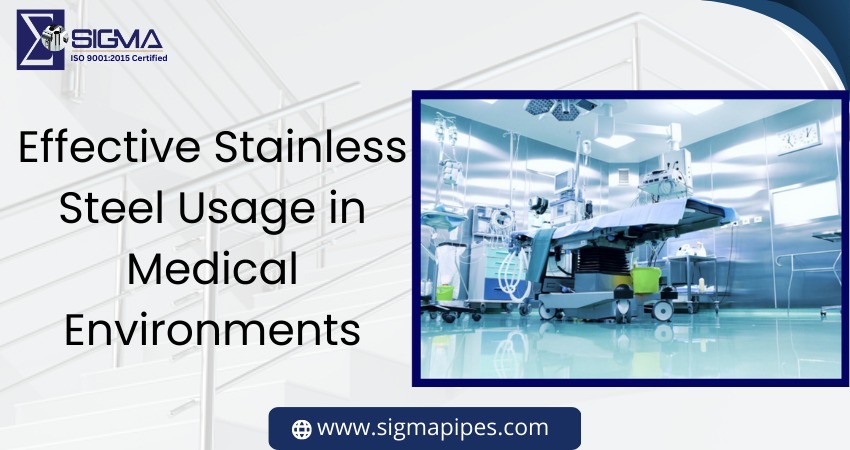The medical or healthcare industry comes with a lot of constrictions and tests. And not every tool or technique passes it. This is because it is concerned with treating or providing treatment to the public. One of the most widely used materials in this industry is acclaimed stainless steel. Wondering why? Well, in this blog, Sigma Steel Pipes will tell you anything and everything about the usage of stainless steel pipe in the medical or healthcare industry and how you can effectively use them throughout.
The Traits of Stainless Steel: Usage in the Medical Industry
There are a variety of traits that contribute to the usage of stainless steel in the medical industry. The traits that give stainless steel an edge over other alloys and metals are:
- The ability to self-heal, thanks to oxygen.
If damaged mechanically or chemically, stainless steel is self-healing, providing that oxygen, even in very small amounts, is present. This is a significant point, considering that other solid surface materials are often plagued by micro-cracks, typically originating where the material meets the perimeter of the drain. These small fissures, invisible to the naked eye, are perfect breeding grounds for bioload bacteria that thrive in warm wet environments. Micro cracks do not occur on self-healing stainless steel surfaces.
- Can be molded into any shape, size, and surface.
A grade of stainless steel pipe-type 304 steel is nonmagnetic stainless steel that contains high levels of chromium and nickel and low levels of carbon. Known for their formability and ease of fabrication, type 304 stainless steel can be cut, welded, formed, machined, and fabricated as readily as traditional steels, making it highly suitable for the widest range of applications. There is virtually no end to the number of applications for stainless steel in a healthcare facility. From medical devices, trays, bed pans, and bed rails to chairs, tables, countertops, hand wash sinks, scrub sinks, drinking fountains, soap dispensers, and more, stainless steel is ideal because of its versatility.
- Greater hygiene value.
Stainless steel surfaces have greater hygiene value and require lower concentrations of disinfectant to achieve the level of hygiene required. This is particularly important in healthcare environments, which are filled with chemical compounds such as iodine, bleach, peroxide, dyes, human tissue, blood, and bodily fluids. In fact, the efficiency of cleaning agents on stainless steel is three to four times greater than on polymers or aluminum. When properly cleaned and maintained, stainless steel surfaces reduce bioburden which can cause disease and infection.
- Cleanliness is next to Stainless-steel-ness!
The hard metallic surface of stainless steel makes it difficult for bacteria, mold, and microorganisms that can cause disease to adhere to and survive. In addition, innovative die-drawn technology enables manufacturers to produce seamless products, fixtures, and other equipment that do not accumulate bacteria-filled debris or waste. It’s easy cleanability makes it the first choice for strict hygiene conditions. Stainless steels (especially type 304) have largely replaced traditional sink materials such as vitreous china because they can be kept scrupulously clean and withstand aggressive chemicals.
Effective Stainless Steel usage: Cleaning and Sanitization
In order to make sure that the application made of stainless steel is cleaned and sanitized properly, the staff of the industry designated with this job is required to clean it with some specific solutions and liquids. These include: Cleaning agents that can be safely used with stainless steel include white vinegar, Sodium Bicarbonate (baking soda), isopropyl (rubbing) alcohol, non-abrasive polish approved for stainless steel, non-chloride cleaners, Windex, alkaline, alkaline chlorinated cleaners, mild detergents, clean (distilled) water with a pH rating of 7 on a pH scale or any of the hospital grade (bleach-free) disinfectants. Apply any of these with the help of a thin coating to the surface being cleaned and dry with a soft lint-free cloth.
Sounds lucid, no? Place an order for your medical brand with us at https://sigmapipes.com/.













